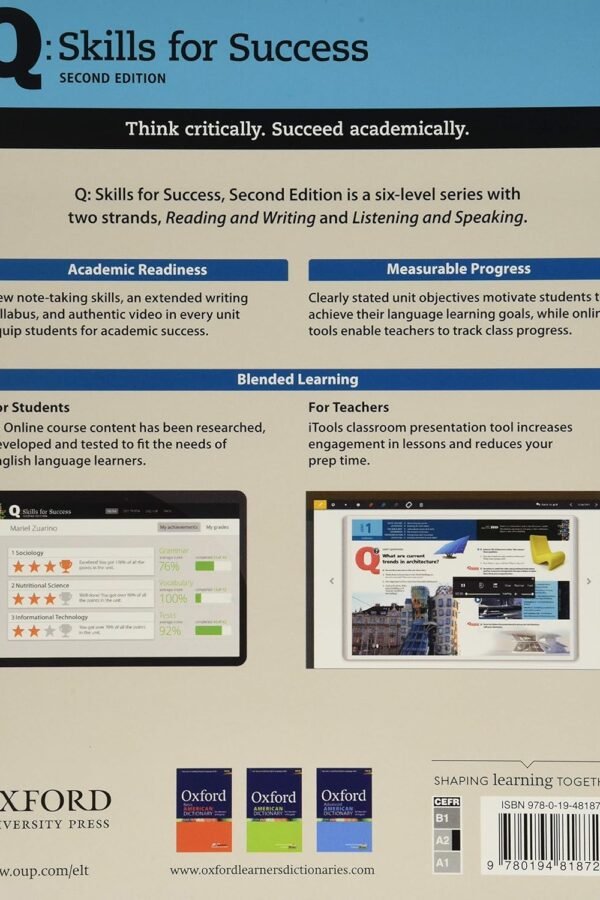In “How to Assess a Manager’s Approach to Equity and Inclusion Issues,” the author discusses the importance of evaluating a manager’s ability to create an inclusive and fair work environment. The article highlights a reader’s concern about their company hiring a manager with strong religious beliefs that women should submit to men. Drawing from their past experience working at a conservative bible college/seminary, the reader shares how employees from this institution often held discriminatory beliefs about gender roles. The article suggests asking management candidates about their experiences working with diverse groups and navigating difficult dynamics related to race and gender. Additionally, having a diverse hiring committee and implementing equitable practices within the company are essential. Ultimately, evaluating a manager’s approach to equity and inclusion is crucial for fostering a positive work environment.
Assessing a Manager’s Approach to Equity and Inclusion Issues

Background and Context
When hiring a new manager, it is essential to assess their approach to equity and inclusion issues within the workplace. This is especially important in today’s diverse and multicultural society, where organizations are striving to create inclusive environments where all employees can thrive. Identifying a manager’s stance on equity and inclusion ensures that they will be able to lead and support a diverse team effectively.
Importance of Assessing a Manager’s Approach
Assessing a manager’s approach to equity and inclusion is crucial for several reasons. First and foremost, a manager plays a significant role in shaping the culture of an organization. Their behaviors and actions influence how employees feel and whether they feel valued and included in the workplace. A manager who is not committed to equity and inclusion may create an environment where certain groups of employees are marginalized or excluded.
Furthermore, an inclusive work environment has been proven to have numerous benefits. It fosters innovation, creativity, and collaboration among diverse employees. It also enhances employee engagement and retention, leading to higher productivity and lower turnover rates. Assessing a manager’s approach to equity and inclusion ensures that these benefits are realized within the organization.
Incorporating Equity and Inclusion in the Hiring Process
Incorporating equity and inclusion in the hiring process begins with crafting job descriptions and conducting interviews that attract a diverse pool of candidates. It is essential to use inclusive language and highlight the organization’s commitment to diversity and inclusion. Additionally, the interview panel should be diverse to ensure a fair and unbiased evaluation of candidates.
Interview questions should also address a manager’s approach to equity and inclusion. They should be designed to assess the candidate’s experience in creating inclusive environments and their ability to navigate difficult dynamics around identity. Examples of such questions include:
- “Can you tell us about a time when you worked to make sure your team was a place where everyone could thrive, particularly women and people of color? How did you check to ensure those efforts were working?”
- “Can you tell us about a time you navigated difficult dynamics around race, gender, or other identities in your work? What do you think were some of the root causes of those dynamics?”
- “How do you think about equity and bias around things like race and gender when hiring or developing people? How have you known when your efforts to foster equity were working or not?”
- “In your work as a manager, how do you approach learning about equity and inclusion issues? What’s something you’re working on learning? What strategies are you using?”
Asking these questions not only helps in assessing a manager’s approach to equity and inclusion but also encourages candidates to reflect on their own biases and areas for growth.
Probe for Experience in Creating Inclusive Environments
While interviews provide valuable insights into a manager’s approach to equity and inclusion, it is also important to probe for their experience in creating inclusive environments in previous roles. Candidates should be asked about specific initiatives they have implemented to promote diversity and inclusion and the outcomes of those initiatives.
For example, questions may include:
- “Can you give us an example of a time when you successfully created an inclusive work environment? What steps did you take, and what were the outcomes?”
- “How have you promoted diversity and inclusion in your previous roles? Can you share specific initiatives you have implemented?”
- “In what ways have you ensured that all employees feel valued and included in the workplace? Can you provide examples of strategies you have used?”
Asking these questions allows the hiring team to assess a candidate’s track record in fostering equity and inclusion and whether they have made a meaningful impact in their previous roles.

Navigating Difficult Dynamics around Identity
One of the challenges that managers may face is navigating difficult dynamics around identity in the workplace. These dynamics can arise from differences in race, gender, religion, or other aspects of identity. It is important to assess a manager’s ability to address and resolve these issues effectively.
During the interview process, candidates can be asked questions such as:
- “Can you tell us about a time when you faced difficult dynamics around race, gender, or other identities in your work? How did you handle those situations?”
- “What strategies have you used to promote understanding and inclusion among employees from diverse backgrounds?”
- “How do you ensure that all employees feel respected and included, even when there are conflicting viewpoints or misunderstandings related to identity?”
The responses to these questions can provide insights into a candidate’s approach to addressing difficult dynamics and their ability to create a respectful and inclusive work environment.
Approach to Equity and Bias in Hiring and Development
Another important aspect to consider when assessing a manager’s approach is their stance on equity and bias in hiring and development. Managers play a critical role in shaping the composition of their teams and providing equal opportunities for all employees to grow and develop their careers.
Candidates can be asked questions such as:
- “How do you think about equity and bias around things like race and gender when hiring or developing people?”
- “What steps do you take to ensure a fair and unbiased hiring process?”
- “How do you identify and address biases in performance evaluations and career development opportunities?”
The answers to these questions will provide insights into a candidate’s commitment to equity and their strategies for creating a fair and inclusive environment for all employees.

Continued Learning and Growth in Equity and Inclusion
Equity and inclusion are constantly evolving fields, and it is important for managers to continue learning and growing in these areas. Assessing a candidate’s commitment to building their knowledge and skills in equity and inclusion is essential to ensure that they will stay up-to-date with best practices and promote an inclusive environment.
Candidates can be asked questions such as:
- “In your work as a manager, how do you approach learning about equity and inclusion issues?”
- “What resources do you use to stay informed about the latest developments in equity and inclusion?”
- “What steps do you take to ensure that your knowledge and understanding of equity and inclusion are up-to-date?”
The answers to these questions will provide insights into a candidate’s commitment to ongoing learning and growth in the field of equity and inclusion.
Importance of Diverse Hiring Committees
When assessing a manager’s approach to equity and inclusion, it is also important to consider the composition of the hiring committee. A diverse hiring committee brings different perspectives and experiences to the evaluation process and helps ensure a fair and unbiased assessment of candidates.
Including individuals from different backgrounds, cultures, genders, and identities on the hiring committee helps to mitigate biases and ensures that a variety of perspectives are considered when making hiring decisions. This diversity of perspectives can contribute to a more inclusive and equitable hiring process.
Considering Previous Interactions and Behaviors
In situations where a hiring manager has prior knowledge of a candidate’s approach to equity and inclusion, it is important to consider this information when making hiring decisions. If the candidate has demonstrated biases or discriminatory behavior in the past, it may be a red flag that they will not be able to effectively lead and support a diverse team.
Sharing specific examples of problematic behavior or biases with others involved in the hiring process allows for a more informed and fair assessment of the candidate. It is essential to focus on observable behaviors and actions rather than personal beliefs or affiliations to ensure compliance with legal hiring practices.
Commitment to Equity After Hiring
Assessing a manager’s approach to equity and inclusion does not end with the hiring process. It is crucial to ensure that once hired, the manager remains committed to promoting equity and inclusion within the organization. This can be achieved by implementing systematic processes and reporting mechanisms that allow employees to report concerns and ensuring that they are addressed in meaningful ways.
Additionally, it is essential to have leadership at all levels of the organization that is willing to tackle difficult and uncomfortable issues related to equity and inclusion. This commitment from leadership sets the tone for the entire organization and reinforces the importance of creating an inclusive environment.
Implementing Systematic Processes and Reporting Mechanisms
To support a manager’s commitment to equity and inclusion, organizations should implement systematic processes and reporting mechanisms. These processes enable ongoing monitoring of the organization’s progress in promoting equity and provide a platform for employees to raise concerns or report incidents of discrimination or bias.
Systematic processes may include regular evaluations of hiring and promotion practices to identify and address any biases. Reporting mechanisms should be accessible, confidential, and designed to ensure that concerns are addressed promptly and effectively. By creating these processes and mechanisms, organizations demonstrate their commitment to equity and inclusion and hold managers accountable for fostering an inclusive environment.
Addressing Issues and Uncomfortable Situations
Finally, it is important to address issues and uncomfortable situations related to equity and inclusion promptly and effectively. When incidents of discrimination or bias occur, managers should be prepared to take appropriate action to address the situation and ensure that all employees feel supported and valued.
Managers should receive training on how to respond to incidents of bias and discrimination and be aware of the resources available to support employees who experience such incidents. This proactive approach helps create a workplace culture where equity and inclusion are prioritized and reinforces the organization’s commitment to the well-being of all employees.
Conclusion
Assessing a manager’s approach to equity and inclusion is essential for creating an inclusive work environment where all employees can thrive. By incorporating equity and inclusion into the hiring process, probing for experience in creating inclusive environments, and assessing a manager’s approach to difficult dynamics and bias, organizations can ensure that they are selecting the right leaders to foster an inclusive workplace. Continued learning and growth, diverse hiring committees, and commitment to equity after hiring are crucial for sustaining an inclusive culture. Organizations should also implement systematic processes and reporting mechanisms and address issues and uncomfortable situations promptly and effectively to ensure a workplace that values and supports all employees.














